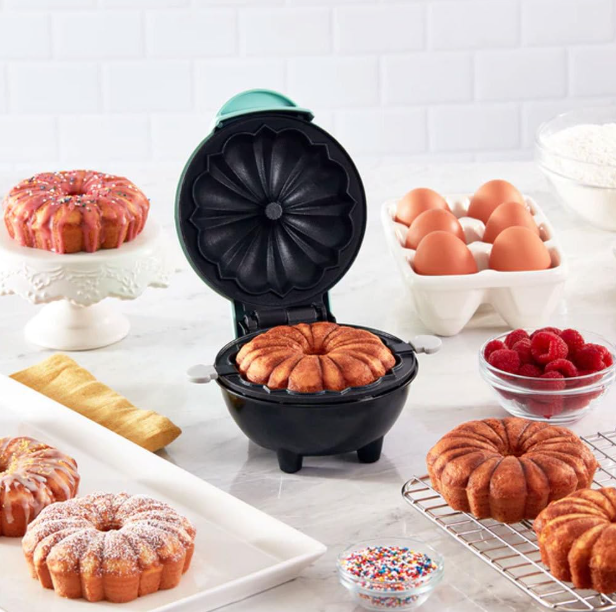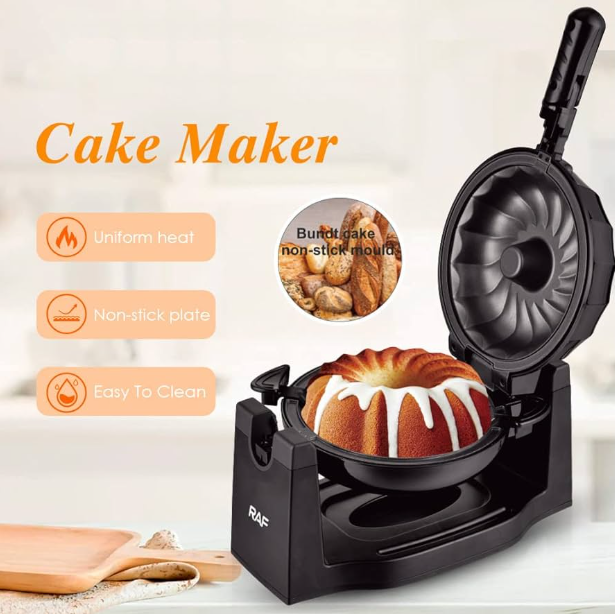A cake maker not heating can be a frustrating issue, especially when you’re eager to whip up delicious cakes with your best cake maker 2025. Whether you’re a home baker or rely on your portable cake maker for quick treats, a heating problem can halt your plans. In this detailed guide, we’ll walk you through cake maker troubleshooting steps to diagnose and fix a cake maker not heating. From checking power connections to cleaning tips, we’ll cover practical solutions to get your appliance back in action. For more expert advice, check out this baking guide. Let’s dive into solving the issue with ease and ensure your cake maker maintenance keeps it running smoothly.
Understanding Why Your Cake Maker Isn’t Heating
A cake maker not heating could stem from various causes, such as power issues, internal component failures, or user errors. Modern cake makers in 2025 often feature digital controls and safety mechanisms, which can add complexity to troubleshooting. However, most problems are fixable at home with the right approach. Before diving into repairs, ensure your safety by unplugging the device and letting it cool completely. This guide will help you systematically address the issue while incorporating cake maker safety and maintenance tips.
Step 1: Check the Power Supply
The first step in cake maker troubleshooting for a cake maker not heating is to verify the power supply. A loose or faulty connection is often the culprit. Follow these steps:
- Ensure the cake maker is plugged into a working outlet. Test the outlet with another appliance, like a lamp, to confirm it’s functional.
- Inspect the power cord for visible damage, such as fraying or cuts. If damaged, do not use the cake maker, as this poses a safety risk.
- Avoid using extension cords, as they may not provide sufficient power for consistent heating. Plug directly into a grounded outlet.
- If your model has a power switch, ensure it’s in the “on” position.
If the outlet and cord are fine but the cake maker not heating persists, move to the next step. For additional setup tips, refer to cake maker resources.
Step 2: Inspect the Indicator Light and Controls
Most 2025 cake makers have an indicator light or digital display to show when the unit is powered and heating. If the light doesn’t turn on, or the display is blank, the issue might be with the internal circuitry or settings. Here’s what to do:
- Check if the indicator light is functioning. A non-working light could indicate a blown fuse or a deeper electrical issue.
- For digital models, ensure you’ve set the correct temperature or mode. Some cake makers won’t heat if the settings are incorrect or if a timer hasn’t been activated.
- Reset the appliance by unplugging it for 10-15 minutes, then plugging it back in. This can resolve minor electronic glitches.
If the controls seem unresponsive, the issue might require professional attention, but first, try the next steps to rule out simpler causes.

Step 3: Examine the Heating Element
The heating element is the core component responsible for baking in your cake maker. If it’s malfunctioning, you’ll face a cake maker not heating issue. While you can’t directly repair the element without technical expertise, you can check for signs of trouble:
- Look for visible damage on the heating plates, such as discoloration or burn marks, which could indicate a faulty element.
- Ensure the plates are properly seated. Some models have removable plates that may not connect correctly if misaligned.
- If your cake maker has a preheat cycle, run it and feel (cautiously) if the plates are warming up. If they remain cold, the heating element may be defective.
Replacing a heating element often requires contacting the manufacturer or a professional technician. However, before assuming the worst, proceed with cleaning and maintenance checks.
Step 4: Clean the Cake Maker Thoroughly
Buildup of batter, grease, or debris can interfere with the heating process, causing a cake maker not heating issue. Proper cake maker cleaning is essential for optimal performance. Here’s how to clean it effectively:
- Unplug the cake maker and ensure it’s completely cool.
- Wipe the heating plates with a soft, damp cloth and mild dish soap. Use a non-abrasive sponge for stubborn residue.
- For stuck-on batter, soak a cloth in warm water and place it on the plates for a few minutes to loosen debris. Avoid submerging the unit unless specified by the manual.
- Check vents and crevices for dust or crumbs, which can affect internal components. Use a small brush or compressed air to clear them.
- Dry thoroughly with a clean cloth to prevent moisture damage.
After cleaning, test the cake maker again. Regular cake maker maintenance prevents these issues, so incorporate cleaning into your routine. For more tips, visit maintenance tips.
Step 5: Check for Overheating Safety Features
Many best cake maker 2025 models include safety features like auto-shutoff to prevent overheating. If the unit was recently used for an extended period, it might have temporarily disabled heating to cool down. Try these steps:
- Let the cake maker rest for 20-30 minutes before attempting to use it again.
- Ensure proper ventilation around the appliance. Place it on an open countertop, away from walls or other heat sources.
- Check the manual for reset instructions specific to your model, as some require a button combination or a cooling period.
Adhering to cake maker safety guidelines prevents overheating issues in the future. Always avoid running the appliance continuously beyond recommended times.
Step 6: Test with a Simple Recipe
Sometimes, user error can mimic a cake maker not heating issue. To confirm the appliance is the problem, test it with a basic recipe:
- Prepare a simple batter (e.g., vanilla or chocolate) using a trusted recipe.
- Preheat the cake maker as instructed, ensuring the indicator light is on.
- Pour a small amount of batter into the molds and bake for the recommended time (typically 10-15 minutes).
- If the batter remains raw, the heating issue is confirmed. If it bakes partially, the temperature may be lower than expected, pointing to a thermostat issue.
Follow how to use a cake maker guidelines precisely to rule out incorrect usage. Consistent batter preparation is one of the key cake maker tips for success.
Step 7: Consult the Manual or Manufacturer
If the above steps don’t resolve the cake maker not heating issue, consult the user manual for model-specific troubleshooting advice. Many manuals include error codes or diagnostic tips for digital models. If the problem persists:
- Contact the manufacturer’s customer support. Provide the model number and describe the issue in detail.
- Check if your cake maker is under warranty, as repairs or replacements may be covered.
- Avoid attempting to open the appliance yourself, as this can void warranties and pose safety risks.
Some 2025 models have smart diagnostics accessible via an app or display, so explore these features for additional insights.

Preventing Future Heating Issues
Once your cake maker is back in working order, adopt these cake maker maintenance practices to prevent future problems:
- Store the appliance in a dry, cool place to avoid moisture damage to electrical components.
- Clean after every use to prevent residue buildup, which can affect heating efficiency.
- Avoid overloading the molds, as excess batter can spill and damage the heating plates.
- Follow cake maker safety guidelines, such as not leaving the unit unattended while powered on.
- Periodically inspect the cord and plugs for wear and tear.
Regular maintenance ensures your best cake maker 2025 performs reliably for years.
When to Replace Your Cake Maker
If troubleshooting doesn’t fix the cake maker not heating issue, and repairs are costly or unavailable, it may be time to replace the unit. Look for a portable cake maker with modern features like auto-shutoff, non-stick plates, and precise temperature controls. The best cake maker 2025 models offer durability and efficiency, making them worth the investment. Explore options and reviews at cake maker resources to find the perfect fit.
Conclusion: Get Baking Again
A cake maker not heating doesn’t have to spell the end of your baking adventures. By following these cake maker troubleshooting steps—checking power, cleaning thoroughly, and consulting the manual—you can often resolve the issue at home. Prioritize cake maker safety and regular cake maker cleaning to prevent future problems. With proper care, your best cake maker 2025 will deliver fluffy, delicious cakes in no time. For more expert advice on how to use a cake maker or maintaining your appliance, visit maintenance tips. Happy baking!